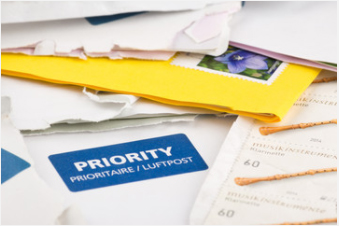Corporate Planning

We urge you to use this information as a guide and continue to refer back to these questions and their answers.
Often the choices you make in developing your plan will enable you to make more specific choices later on. For example, where you have the event will dictate how many people you can host. This should help you with the “who to invite” list.
• Determine your reasons for having the function:
o Annual Event
o Business Anniversary
o Celebration: a new facility or a new product or service o Ground breaking / ribbon cutting o Publicity
o Sale
o Thank you for customers
• Determine your budget. How much are you willing to spend on the overall event?
• Where and When? When you select the location, logistics must be considered. How many people can the venue accommodate? Where will your guests park?
o One day, weekend, week
o During / after office hours
o Time of the year
o Indoors/outdoors
o In your facility or office/canopy or tent, off premises
• Form a committee of people within your organization to work on this event. Assign specific tasks and deadlines.
• Research any possible permits/licenses that may be required. What is needed to apply? How long does it take to process?

• Put together a preliminary guest list. Who to invite?
o Account customers
o Regular customers
o Prospective customers
o Local dignitaries
o Press
o Competitors
o Friends/Neighbors
o Vendors
• Seek proposals from all suppliers involved – caterers, rental dealers, entertainment, florists, and invitations.
• Are you creating a theme for this event? If yes, you should also get a proposal from a decor/prop company
• Inform your advertising agency so they can prepare some special promos.
• Book a rental company and caterer
• Determine type of reception: cocktail-stand up, lunch, dinner
• Determine types of beverages served: wine, beer, soft drinks, punch and coffee
• Check availability of entertainment
• Finalize guest list and order invitations.
• What type of invitations to use? Formal? Flyer? Theme related? Tips: The type of invitation should dictate the type of event. Keep invitations concise, and print extra. The RSVP date should always be clearly noted and specify the occasion.
• Meet with advertising agency
• Book your florist, decor company
• Book entertainment
• Inform staff and neighbours of the time and place of the event
• Conduct site inspection with rental company and caterer to design layout and flow
• Consider your electrical power requirements. Do you have sufficient power for entertainment, food and beverage, and audiovisual equipment?
• Invitations as a statement stuffer, send first mailing now
• Apply for necessary licenses and permits
• Plan demonstrations
• Arrange giveaways/door prizes

• Mail invitations (if using regular mail)
• Invitations as a statement stuffer – send second mailing now
• Review task assignments within your company. Who is responsible for what?
• Receiving RSVP’s. You must get the correct name and spelling of all guests attending
• Prepare location
• Set up
• Hosts/hostesses
• Tour guides
• Demonstrations
• Traffic flow design
• Food serving/refilling/clean up
• Security
• Clean up
• Priority mail or hand delivery of invitations
• Media releases should begin

• All RSVP’s due. This still allows time to follow up invitations by phone
• Prepare a production schedule so all suppliers for the event know when and where they should be arriving at your facility
• All RSVP’s due. This still allows time to follow up invitations by phone
• Prepare a production schedule so all suppliers for the event know when and where they should be arriving at your facility
• Confirm final numbers with caterers and rental company
• Prepare nametags if using. Confirm spelling of any first and last names that you are uncertain of. Do not guess!
